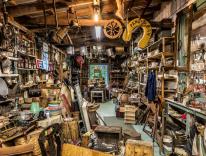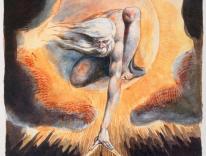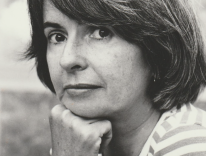Way below I posted Mrs. O'Faolain's incantation to rouse her sons for Lenten Mass. The last line seemed to have neither scriptural nor liturgical resonance: "A fine bright cold hardy morning, with the crow putting out his tongue and ye still in bed!"
Thanks to Margaret Coffey for the following:
The only crow that I know of in Irish myth is the one who came to sit on Cuchulain’s shoulder, signalling death. I doubt that Sean O Faolain was recalling his mother’s literal daily Lenten wake up call, mainly but not only because of that line about the crow. No doubt he was recalling the tenor of the call as it was produced each day and the tools she used to jockey her sons out of bed – you can hear the drama, the shifting registers of those diverse scraps of scripture and liturgy, and the sardonic humour (surely there is a joke in the ‘poor Ned Keating’ scenario.) For the wife of an RIC man, ambitious for her sons, getting the boys on the road to the church must have had added social purpose, though I don’t recall O Faolain ever mentioning the word 'respectability'. To me, the crow line doesn’t sound quite right - in English. I wondered if O Faolain acquired that line via his later learning of the Irish language, and not via his mother, so I checked with a native Irish speaker friend in West Kerry who says it’s a vernacular expression - Ta a dteanga amuigh as na cage – an everyday comment about thirst on a hot day or tiredness at the end of a day’s work, say a day of endless harvesting (the crow begins his work of collecting food at dawn). It seems to me that the expression works to intensify the image of O Faolain’s mother, in particular ways (rural? archaic?). I doubt that during her youth there was much Irish around where she came from, but I may be wrong, and of course it’s conceivable that the expression was carried over into English. The point about her is that she became a town person, and O Faolain was brought up in the garrison city, without, really, a sense of Irish as a living language or, he says, much sense of a lineage. Doubly so, given his father’s cherished colonial subjecthood. If you are finishing with O Faolain do read a coda - follow up with his daughter Julia O Faolain’s memoir Trespassers and Are You Somebody by Nuala O Faolain, who is unrelated. Then you will have a few angles on Irish literati including from the period where O Faolain leaves off in Vive Moi, along with a sense of the confines of Irishness in each of these writers. Keep in mind that the 'helots', as O Faolain calls them, were a major part of the population until the move to the cities really set in mid- twentieth century."
Thank you, Margaret Coffey. Now we know!
P.S. Almost done with Viva Moi! the autobiography, if anyone wants to borrow it.


